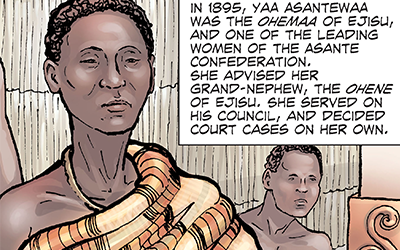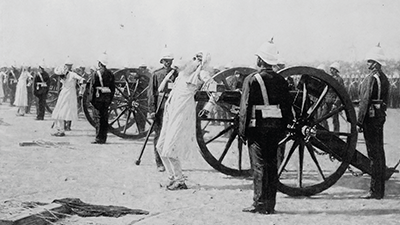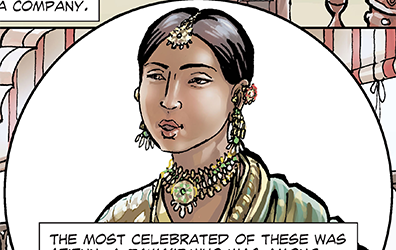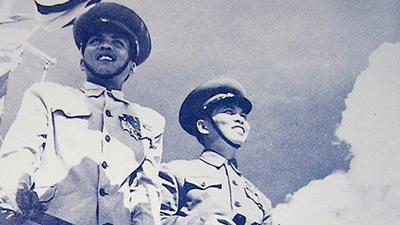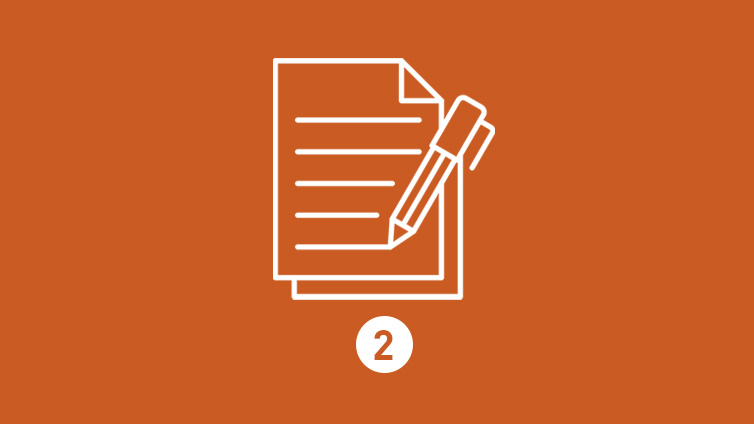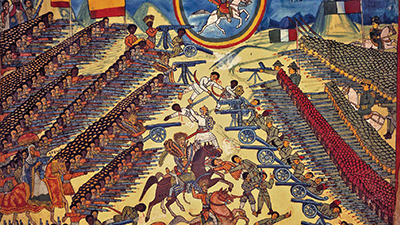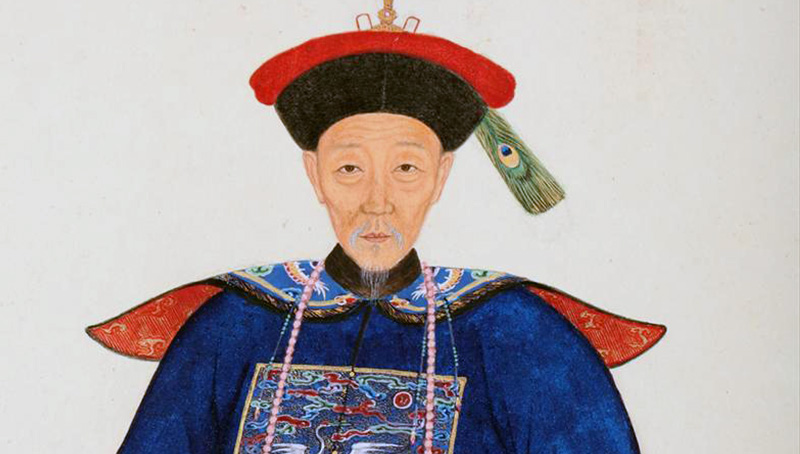Resisting Colonialism
Teacher Resources
Driving Question: How did colonized people resist colonial control?
Empires used a variety of strategies to enforce their rule and expand their reach. Still, everywhere they expanded, empires met resistance. Colonized people resisted in many ways, from violent revolt to quieter, everyday forms of noncompliance.
Learning Objectives:
- Examine the different direct and indirect strategies used to resist colonialism.
- Use the historical thinking skill of causation to understand challenges to colonial rule during this period.
- Use a graphic biography to support, extend, or challenge the overarching narratives of this period.
Vocab Terms:
- administrator
- formal colonialism
- racism
- rebellion
- resistance
- segregation
- subject
Opener: Resisting Colonialism
To teach this lesson step, refer to page 3 of the Lesson 6.4 Teaching Guide.
Our Openers and Closers Guide will provide more information about these short, but important, activities at the beginning and end of each lesson.
As you prepare to learn about the ways that colonized people resisted, sort the thinking of imperialism into motives and goals.
Resistance in Ghana
To teach this lesson step, refer to page 3 of the Lesson 6.4 Teaching Guide.
Looking for tips on using video in an instructionally sound way? Look no further than the OER Project Video Guide.
Learn how Ghanaians challenged colonial rule through everyday resistance and bold leadership. These materials highlight powerful actions taken by individuals and communities to defend their land and dignity.
-
Guiding Questions
-
Before you watch
Preview the questions below, and then review the transcript.
While you watch
Look for answers to these questions:
- When did the British conquer the area that is now Ghana?
- What was the Customs House used for under British rule?
- How did some Ghanaians resist while working at the Customs House?
- What kind of transportation did the British use to control cocoa exports?
- Why was the trotro system important for Ghanaians under colonial rule?
After you watch
Respond to this question: How did the resistance shown in this video challenge your ideas about what colonialism looked like?
Key Ideas
-
Guiding Questions
-
Before you read
Preview the questions below, and then skim the comic, paying attention to things like prominent colors, shapes, and types of text and fonts. How do you know where to start and in which direction to read? What’s in the gutters (the space between panels)? Who or what is the focus of the comic?
While you read
- What was the Asante state, and who was Yaa Asantewaa?
- What role did the Queen Mother, or Ohemaa, play in Asante society?
- What happened in 1895, and how did it shape Yaa Asantewaa’s actions?
- What events unfolded in 1900, and how did Yaa Asantewaa respond?
- How does the artwork in this biography represent Yaa Asantewaa’s leadership?
After you read
Respond to this question: How does this biography of Yaa Asantewaa support, extend, or challenge what you've learned about resistance to colonial rule in this period?
Resistance in India
To teach this lesson step, refer to page 5 of the Lesson 6.4 Teaching Guide.
Check out our Causation One-Pager for a quick review of this important historical thinking skill.
Learn what sparked the 1857 Indian Uprising and how Indian people challenged British colonial rule. This activity, article, and comic highlight the pivotal roles individuals played in challenging colonial rule.
-
Guiding Questions
-
Before you read
Preview the questions below, and then skim the article. Be sure to look at the section headings and any images.
While you read
Look for answers to these questions:
- Who ruled much of India in 1857?
- What was the doctrine of lapse?
- Who made up most of the East India Company’s army, and how were they treated?
- What event sparked the 1857 uprising?
- What was the outcome of the uprising?
After you read
Respond to this question: Why do the words we use—such as mutiny, revolt, or war of independence—shape how we understand the 1857 uprising?
-
Guiding Questions
-
Before you read
Preview the questions below, and then skim the comic, paying attention to things like prominent colors, shapes, and types of text and fonts. How do you know where to start and in which direction to read? What’s in the gutters (the space between panels)? Who or what is the focus of the comic?
While you read
- Where did Azizun live, and what was the political status of that place in 1856?
- What was a Tawa’if, and how did the British view them?
- How did Azizun respond to the events of 1856 and 1857?
- In what ways did Azizun defy expectations for women at the time?
- What message does the final image send about Azizun’s resistance?
After you read
Respond to this question: How does Azizun’s story support or challenge what you’ve learned about the “civilizing mission” and resistance to colonial rule?
Patterns of Resistance
To teach this lesson step, refer to page 10 of the Lesson 6.4 Teaching Guide.
This blog post, “Reframing the Task of Reading in History”, offers strategies to help students think like historians.
People and communities under imperial rule responded with protest, adaptation, negotiation, and even rebellion. Use this article and activity to connect the case studies in this lesson with the global patterns.
-
Guiding Questions
-
Before you read
Preview the questions below, and then skim the article. Be sure to look at the section headings and any images.
While you read
Look for answers to these questions:
- How were crops like corn and cassava used as tools of resistance?
- What were some goals colonial subjects hoped to achieve through resistance?
- How did rats become part of resistance efforts in Hanoi?
- In what ways did French education in Indochina backfire?
- How did people in the Southeast Asian highlands avoid colonial control?
After you read
Respond to this question: How did these examples challenge your understanding of what resistance can look like?
Closer: Resisting Colonialism
To teach this lesson step, refer to page 11 of the Lesson 6.4 Teaching Guide.
Our Assessment Guide shares our approach to assessments of all kinds—check it out!
In this unit, you explored how imperialism reshaped global power. Now, use what you’ve learned to compare colonial systems and reflect on their lasting impact today.
Writing: Evaluating Responses to Colonial Rule
To teach this lesson step, refer to page 11 of the Lesson 6.4 Teaching Guide.
This video is an excellent resource for teaching sourcing in the classroom.
In this writing activity, you’ll use evidence from sources to support an argument that responds to the question: How effective were responses to colonial rule between 1850 and 1900 CE?
Resistance Movements
To teach this lesson step, refer to page 12 of the Lesson 6.4 Teaching Guide.
Across the globe, colonized peoples responded differently to imperialism. Read an article and practice quick sourcing as you uncover stories of resistance, resilience, and adaptation in the face of colonial rule.
-
Guiding Questions
-
Before you read
Preview the questions below, and then skim the article. Be sure to look at the section headings and any images.
While you read
Look for answers to these questions:
- Was most resistance to colonialism organized violent revolt?
- Why did the Italians want to conquer Ethiopia?
- How did Emperor Menelik II and Empress Taytu resist the Italian invasion?
- What strategies did Samori Ture pursue when the French first invaded his territory?
- After first being defeated in battle, what did Samori Ture do to escape French rule?
After you read
Respond to this question: Which of the resistance strategies in this article do you think was the most effective?


